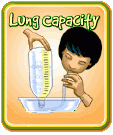
Contributed By: COSI Columbus
|
| Share This Experiment |
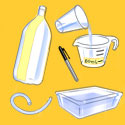 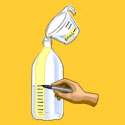 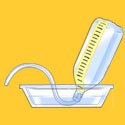 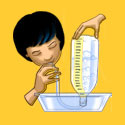 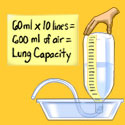 |
Experiment Category:
Objective:
To measure how much air your lungs can hold by making a spirometer.
What You Need:
- 2 or 3 liter plastic bottle
- Large, deep bowl or plastic dishpan
- Water
- Masking tape
- Measuring cup
- 30 cm (1 foot) long piece of flexible tubing (aquarium tubing works well)
To Do and Observe:
1) Vertically attach a strip of masking tape to the plastic bottle, from the bottom to the top of it. Fill the measuring cup with 60ml of water. Pour the water into the bottle. Mark the water level on the tape. Repeat until you've marked to the top of the bottle.2) Fill the dishpan about 10cm (4 inches) high with water.3) Fill the plastic bottle to the top with water, and hold your fingers over the mouth of the bottle so the mouth is completely covered.4) Invert the bottle into the pan of water. Make sure you do not remove your fingers until the mouth of the bottle is completely submerged. Insert one end of the tubing into the mouth of the bottle.5) Take a breath and exhale completely into the open end of the tubing.6) Measure how much air is now in the bottle (count the marks). To calculate your lung capacity, multiply the number of marks by 60ml. If your pan is not too full of water, you can repeat without filling the bottle back up.
What's Going On:
The amount of air you can hold in your lungs is called lung capacity, and can be measured with a spirometer. Blowing air from your lungs into the bottle forces a measurable amount of the water out of the bottle, which adds to the volume of water in your pan. This method of measuring uses displacement-you're displacing a volume of water with a volume of air. Displacement is often used when something can't be measured directly. What else could you measure using displacement?
Parent/Teacher Tips:
Check for variations in lung capacity in people of different sizes (older siblings, you, your child). Ask your child to look for a correlation between body size and lung capacity. Have each participant test for a difference between a "normal" breath of air and an "expanded" deeper breath.
